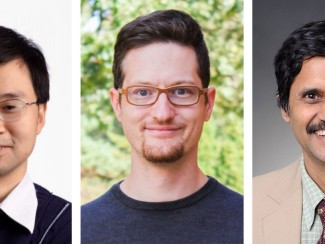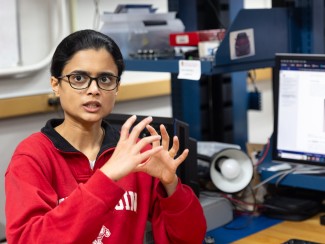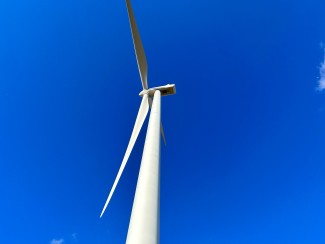
In June of 2014, the U.S. Environmental Protection Agency (EPA) released its first ever guidelines for reducing carbon emissions from existing power plants. Called the Clean Power Plan, it proposes cutting carbon pollution in the power sector by 30 percent from 2005 emission levels by 2030.
Due to the highly variable nature of the U.S. energy system, the Clean Power Plan frames the power sector’s carbon pollution as a problem best solved by implementing an array of local, state-based solutions. What those regional solutions will be is the topic of ongoing discussion.
For the better part of a decade, Wisconsin Energy Institute scientist Paul Meier has been working on a tool that could help decision makers rise to this particular challenge. Meier’s computer program “Juice Box” is a networked, multi-user simulation of the U.S. energy grid that enables real-world stakeholders to work together on alternatives that cut carbon emissions.
Unlike other national energy models in use today – the large scale of which tends to wash away fine grain details, producing simplified versions of the bigger energy picture – Juice Box allows many individual users to simulate localized systems and to see how different technologies and resources could impact their unique corner of the energy grid.
“I’ve tried to replicate much of the infrastructure, operations and rules that exist in the real world,” Meier says of Juice Box. “And instead of having the model optimize or say ‘here’s what you should do’ I let people turn the levers and build their own scenarios. I’m much more interested in what public interest groups, utilities and regulators think makes sense given the resources and attitudes in their own state.”
One of Juice Box’s most powerful functions is its ability to simulate a wide variety of “what if” scenarios for any given jurisdiction. In other words, what happens to an existing system if you “plug in” different clean energy technologies, including technologies still in development, as well as new regulatory constraints?
When it comes to cleaner energy, we as a country really need to have an accelerated conversation about what makes sense. Juice Box is a simple tool for understanding something that’s actually really complex: how we make energy in different ways and in different places, and how that all adds up in total.
Paul Meier
“When you’re looking at a challenge like using more clean energy, you have a lot of constraints to contend with,” Meier explains. “You have to build low carbon resources, you have to keep the lights on, you have to keep costs down and you’ve got to watch carbon emissions and other pollutants. You’ve got to do all these things, and sometimes those objectives work in concert and sometimes they don’t.”
Running the numbers on each new simulated scenario can provide information on a number of important factors, including measurements of emissions, system performance and economic impact.
The networked and user-driven nature of Juice Box is also a major component of its novelty. Meier imagines a scenario in which local experts and stakeholders work out different energy solutions for their region, while simultaneously contributing to an emerging (and highly detailed) picture of an alternative energy future for the entire nation.
“When it comes to cleaner energy, we as a country really need to have an accelerated conversation about what makes sense,” Meier says. “Juice Box is a simple tool for understanding something that’s actually really complex: how we make energy in different ways and in different places, and how that all adds up in total.”
On Monday, November 24, 2014, as part of the Wisconsin Energy Institute’s ongoing “Sustainable Energy Seminar Series: Exploring Solutions Small and Large,” Meier will present “Common Sense Objectives for American Energy,” a look at the particular energy choices and challenges facing the U.S. The talk, which is open to the public, will take place in room 1115 of the Wisconsin Energy Institute. A recording will also be posted to the Wisconsin Energy Institute website.
Meier is also taking part in a UW-Madison-hosted Massive Open Online Course (a “MOOC”) in June 2015 entitled “Energy and the Earth,” during which thousands of online participants will have the opportunity to use Juice Box to examine their own state’s electricity future.





